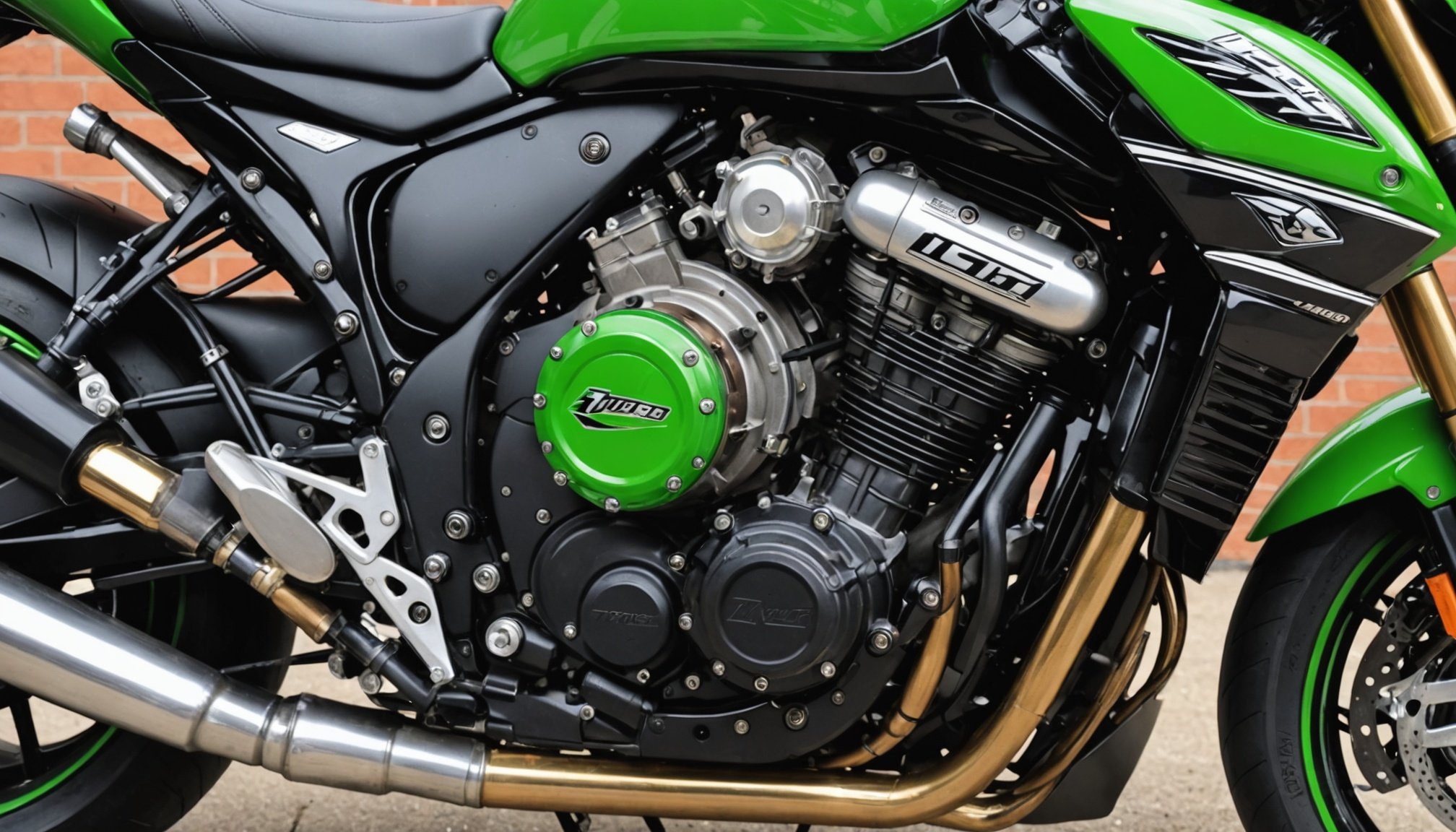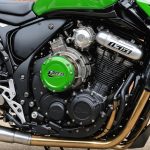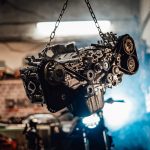Compatibility of Turbo Kits
When selecting a turbo kit for your Kawasaki ZX-14R, understanding model variations is crucial. Different ZX-14R models can significantly impact kit compatibility, so be cautious when choosing an upgrade. Performance upgrades often promise thrilling enhancements, but ensuring every component fits your specific model is essential to achieving optimal results without causing damage or inefficiencies.
Manufacturer specifications act as the guiding light in this process. They provide the necessary details about which turbo kits suit different ZX-14R model years. Compatible turbo kits usually consider factors like engine architecture, frame modifications, and pre-existing performance components. Most reputable turbo kit manufacturers provide detailed compatibility guides or charts. Therefore, a thorough compatibility check is indispensable.
Also to discover : Essential Steps for Inspecting and Changing Brake Fluid on Your Honda Africa Twin: A Comprehensive Guide
Several performance upgrades, like intercoolers or fuel system enhancements, may accompany the turbo kit. Checking that these complementary components align with your specific ZX-14R model ensures seamless integration. Selecting a turbo kit without accounting for these variations might lead to costly adjustments or underperformance.
In summary, ensuring turbo kit compatibility with your Kawasaki ZX-14R requires meticulous attention to model differences and manufacturer guidelines. This approach not only enhances performance but also guarantees the longevity and reliability of your motorcycle.
Topic to read : Exploring the Advantages of Upgrading Your Honda VFR800 Exhaust System for Ultimate Touring Performance
Necessary Tools for Installation
Installing a turbo kit involves several crucial steps, each requiring specific tools. Essential for the installation are basic hand tools such as wrenches and sockets. These are required to ensure every component is securely attached and aligned correctly.
Specialized tools, while not always necessary, can greatly ease the turbo kit setup process. For instance, utilizing a torque wrench ensures that all connections meet specified torque requirements, preventing potential damage from over-tightening. Moreover, having a gasket scraper on hand can facilitate the removal of old gaskets, ensuring a clean surface for new seals.
However, in situations where specialized tools are unavailable, certain downgrades or improvised solutions can still deliver successful results. For example, a digital torque adapter can be used with standard ratchets if a torque wrench is not present. It provides a reliable alternative that maintains accuracy in torque application.
Consider preparing a checklist of these tools for an organized and smooth installation experience. By equipping yourself with the required equipment and tools ahead of time, you’ll streamline the process, minimizing delays and ensuring efficiency.
Technical Challenges During Installation
Installing components on a ZX-14R can initially appear daunting due to its compact engine layout and intricate design. Technical issues frequently arise from these space constraints, making it crucial to understand the engine’s setup during initial stages.
Typical installation difficulties include inadequate space for new parts and the complexity of routing wiring and plumbing. To mitigate these, begin by familiarising yourself with the bike’s layout. Referencing a comprehensive guide or manual can offer clarity on specific areas that may require extra attention.
When confronted with restricted spaces, utilise tools designed for tight environments, which can simplify many problem-solving tasks. Moreover, wiring can be a tangle without a proper plan. Consider mapping out wiring paths before commencing the installation to pre-empt confusion and errors. Grouping similar wires and using labels can also facilitate a smoother setup.
In terms of plumbing, always test connections to ensure there are no leaks or mismatches. Addressing these common technical issues with patience and precision can profoundly enhance both the experience and success of the installation process. With the right strategies, even the most intricate installation difficulties can be overcome efficiently.
Tuning Requirements Post-Installation
Once the installation is complete, focusing on the tuning process is essential to optimise your ZX-14R performance. ECU adjustments play a significant role in ensuring that the motorcycle performs at its best by fine-tuning the engine’s parameters. This type of performance tuning can greatly enhance power output, fuel efficiency, and responsiveness.
ECU Tuning Significance
The tuning process involves customising the Electronic Control Unit (ECU) settings to match your individual riding preferences and any modifications you may have made. When done correctly, this can lead to enhanced motorcycle performance, improved throttle response, and smoother power delivery.
Suggested Tools and Software
For ZX-14R owners keen on embarking on this journey, a variety of reliable tuning software tools are available. Products such as Power Commander or ECU Flash offer comprehensive solutions for performance tuning. These tools provide real-time data and insights, allowing fine-tuning of ECU settings to suit personal preferences.
Professional vs. DIY Tuning
While the prospect of a DIY approach might be appealing, professional ECU adjustments are often recommended to ensure accuracy and efficiency. Professionals possess the experience and equipment necessary to perform complex tuning tasks, reducing the risk of errors and potential damage.
Performance Optimization Tips
After installing a turbo, achieving peak performance enhancement requires a combination of strategic techniques and regular upkeep. To begin with, ensure the turbo system is correctly calibrated to synchronise with the engine. Proper calibration involves fine-tuning air-fuel ratios and adjusting boost pressures to maintain turbo efficiency—which translates into substantial improvements in power output and fuel economy.
Maintenance Routines
Dedicated maintenance advice is crucial to extend the life and efficiency of your turbo. Regular oil changes and filter replacements are essential to prevent contaminants from impairing turbo components. Keep an eye on turbocharger hoses and connections to avoid leaks that can degrade performance enhancement. By maintaining a rigorous inspection schedule, you ensure that any potential issues are addressed before they escalate.
Rider Habits Impact
Rider habits significantly influence the overall turbo efficiency. Avoid sudden accelerations and frequent starts and stops, as these can strain the turbo and reduce its lifespan. Instead, opt for a more consistent driving pattern, which not only conserves fuel but also optimizes the turbo’s responsiveness. Implementing these habits can yield a noticeable difference in maintaining peak performance enhancement for your turbo system.
Common Pitfalls and Troubleshooting
Installing a turbo system is not without its challenges, and tackling installation errors requires attention to detail and a proactive approach. One frequent mistake involves improper alignment of components, which can lead to poor performance or even damage. Ensuring that all parts are correctly positioned and securely fastened is crucial for optimal function.
In the world of turbo systems, navigating maintenance challenges can be daunting. A comprehensive troubleshooting guide can aid in diagnosing common performance issues such as sudden power loss or excessive noise. Start by checking for leaks in the system, as they can often be the culprit. Another potential issue is the build-up of debris or foreign objects, which requires thorough cleaning and inspection.
Preventative measures are vital to mitigating future problems. Regular maintenance checks help identify issues before they escalate. These include monitoring oil levels and ensuring that the air filter remains clean and unobstructed to maintain system efficiency. Implementing these strategies not only prolongs the life of your turbo system but also enhances performance, keeping your engine running smoothly.











